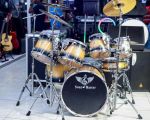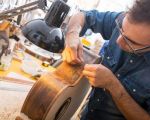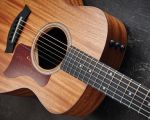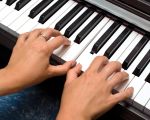Exploring the Instruments Used in Mariachi Music
- Introduction to Mariachi Music
- Essential Instruments in Mariachi Music
- The Guitar in Mariachi Music
- The Trumpet in Mariachi Music
- The Violin in Mariachi Music
- More Instruments Used in Mariachi Bands
- How the Instruments Combine in Mariachi
1. Introduction to Mariachi Music
Mariachi music is a deeply rich and vibrant genre that has become synonymous with Mexican culture. It’s a genre that brings together the energy of rhythm, the beauty of melody, and the soul of Mexico’s traditions. As someone who has experienced mariachi performances firsthand, I can say that there's nothing quite like the lively and spirited tunes that mariachi bands produce. The music itself is a fusion of Spanish, indigenous, and African influences, which makes it so special and unique.
Mariachi bands are typically made up of musicians playing a variety of instruments, with each instrument adding a distinct layer to the overall sound. If you’ve ever heard a mariachi band, you’ve likely noticed the incredible harmony between the instruments—each one serving its purpose, from creating a lively rhythm to adding expressive melodies. In this article, I’ll walk you through the main instruments used in mariachi music and how they work together to create the unforgettable sound that mariachi is known for.
2. Essential Instruments in Mariachi Music
At the core of mariachi music, there are several essential instruments that are typically present in any performance. These instruments are carefully selected to balance rhythm, harmony, and melody, giving mariachi its unique sound. After attending many live mariachi shows, I've come to appreciate how each instrument plays its part in creating the vibrant and energetic atmosphere. Let’s break down the key instruments that make up a mariachi band:
2.1 The Guitar
The guitar is one of the most prominent instruments in any mariachi band. It serves as the backbone of the mariachi’s rhythm, providing the harmonic foundation for the entire performance. There are actually two types of guitars used in mariachi bands: the standard guitar and the guitarrón. The guitarrón is a large, deep-bodied bass guitar that provides the low-end rhythm, while the regular guitar supports the melody and harmony with its higher-pitched strings. Together, they create a full-bodied sound that drives the band’s rhythm section.
During my time at a mariachi performance in a local plaza, I was amazed at how the guitarists effortlessly weaved together the intricate melodies, making the whole performance come alive. It’s a combination of fast-paced strumming and precise plucking that gives mariachi its lively and upbeat feel.
2.2 The Trumpet
The trumpet is another key instrument in mariachi music, and it adds brightness and excitement to the sound. Trumpets in mariachi bands typically play both melodic lines and harmonies, adding a bold and distinctive layer to the overall arrangement. The sharp, bright sound of the trumpet can be heard clearly, cutting through the other instruments and creating dramatic, high-energy moments in the music.
At one of the mariachi concerts I attended, the trumpets were absolutely mesmerizing, their bright notes and powerful blasts filled the air and had everyone in the audience on their feet. I noticed how the trumpet players expertly interacted with the other musicians, creating musical conversations that made the performance feel incredibly dynamic and alive.
2.3 The Violin
The violin plays a central role in mariachi music as well, often weaving through the melodies with beautiful, soaring notes. What I love about the violin in mariachi is its ability to add emotion and depth to the music. The violinist can create everything from delicate, lyrical lines to energetic, fast-paced runs that complement the rhythm section and the brass instruments.
One of my favorite mariachi experiences was when the violinist took center stage during a particularly emotional song, and the entire crowd fell silent as the violin played a mournful, heartfelt melody. The violin truly has the power to evoke deep emotions, which is why it’s such a critical part of mariachi music.
3. More Instruments Used in Mariachi Bands
While the guitar, trumpet, and violin are the main instruments in most mariachi bands, there are a few other instruments that can be found, depending on the band’s lineup and the style of music being performed. Some of these include the harp, the vihuela, and the voice. Each instrument brings a distinct flavor to the mariachi experience, enriching the overall sound.
3.1 The Harp
The harp is often used in more traditional mariachi performances, particularly in the Jalisco region where the genre originated. It adds a smooth, flowing element to the music, providing both rhythm and melody. The harp’s delicate plucking creates a contrast to the more energetic sounds of the brass and string instruments, making the music feel more balanced and rounded.
3.2 The Vihuela
The vihuela is a five-stringed guitar-like instrument that plays an important role in providing rhythm and harmonic support. It is smaller than the regular guitar, and its distinctive, high-pitched sound gives mariachi music its signature “choppy” rhythm. When I saw a mariachi band with a vihuela player, I could immediately feel the rhythm and how it blended seamlessly with the guitarrón to create a powerful groove.
3.3 The Voice
The human voice is also a vital instrument in mariachi music. Many mariachi songs feature powerful vocals, often with multiple singers harmonizing to create a rich, emotional sound. The vocalists in a mariachi band bring a unique level of storytelling to the music, as many of the songs convey themes of love, passion, and heartbreak. I’ve always been impressed by the raw emotion conveyed through the singers' voices, and their performances truly elevate the entire experience.
4. How the Instruments Combine in Mariachi Music
What makes mariachi music so special is how all these instruments work together to create a harmonious and energetic sound. The rhythm section—led by the guitarrón and vihuela—sets the pace and provides the foundation, while the guitar adds melodic support. The trumpets add brilliance and excitement, and the violin elevates the emotion of the music. The harp, though less common, can add a unique layer of beauty, and the voice ties everything together with storytelling and passion.
At a mariachi concert I attended, I was amazed by how the musicians interacted with one another. Each instrument would take turns leading the melody or providing harmonies, while the other instruments played supporting roles. This interplay between the instruments is what makes mariachi music so dynamic and lively—it’s as though the instruments are having a conversation, each taking turns to speak while maintaining a strong, unified sound.
5. Conclusion: Mariachi’s Unique Blend of Instruments
Mariachi music is a perfect example of how different instruments can come together to create something beautiful, emotional, and unforgettable. The combination of guitars, trumpets, violins, and other instruments brings the music to life, creating a rhythm and melody that is distinctly Mexican. Whether you’re attending a live mariachi performance or listening to recordings, the diverse range of instruments makes mariachi music an experience that resonates with people all over the world.
If you’re interested in exploring more about mariachi music or learning to play one of the instruments used in mariachi, be sure to check out online courses or local music schools. Mariachi is a musical tradition worth exploring, and it’s an experience you won’t soon forget.








